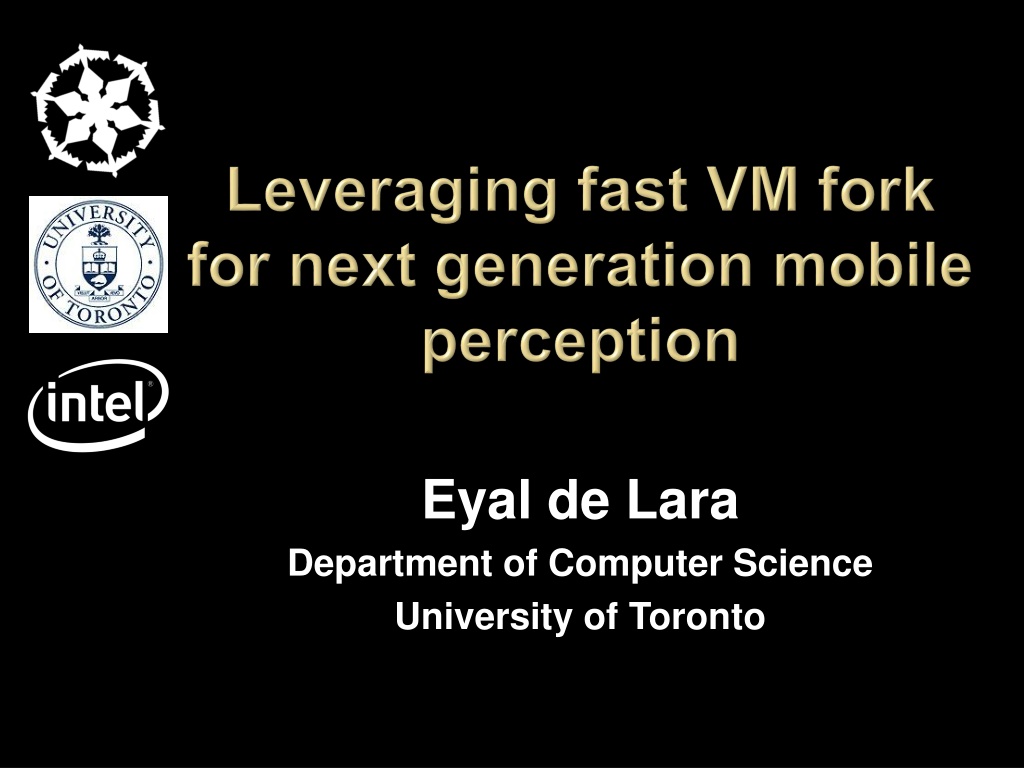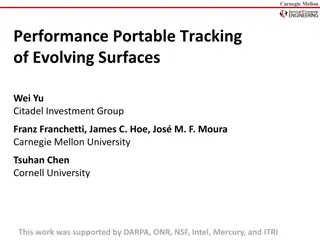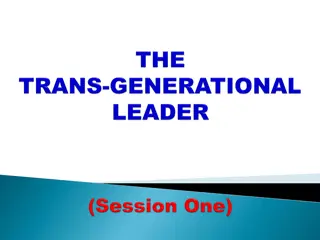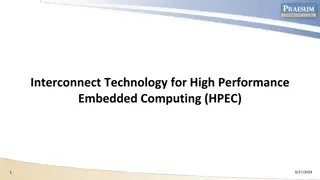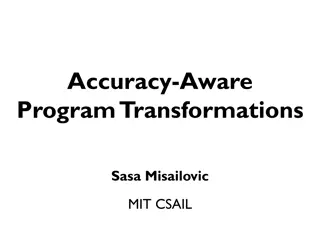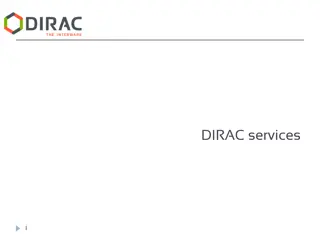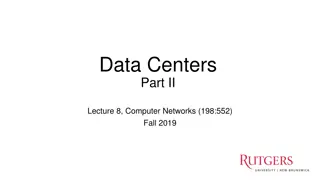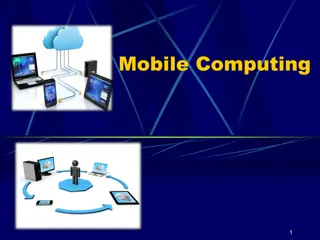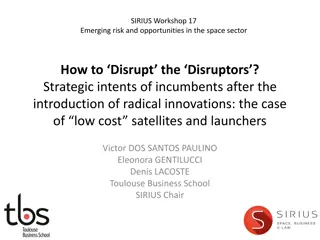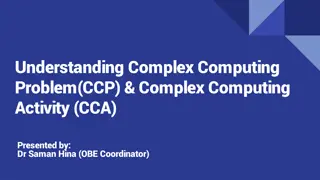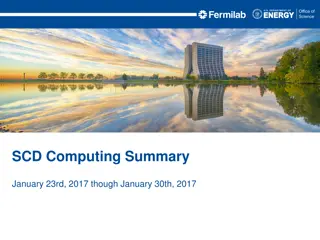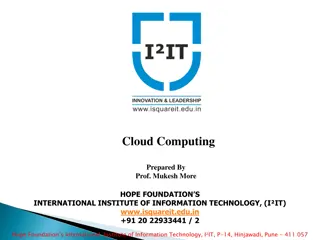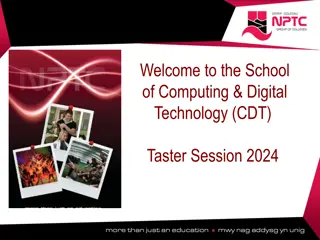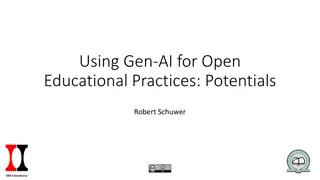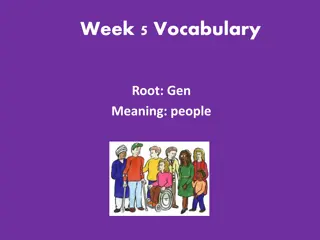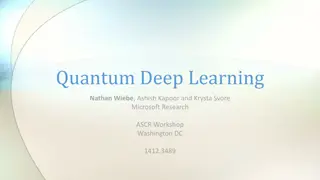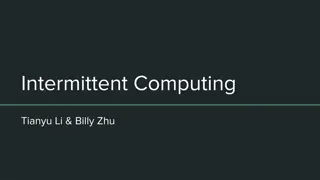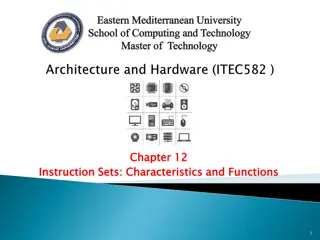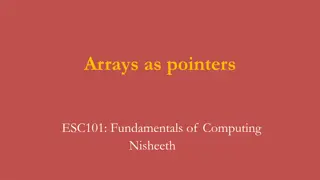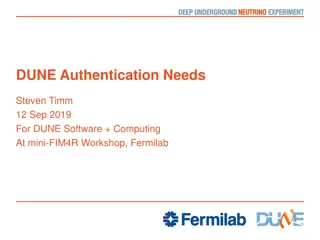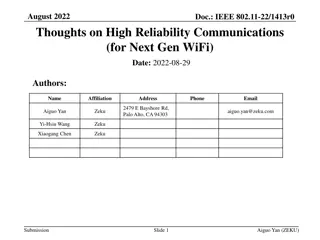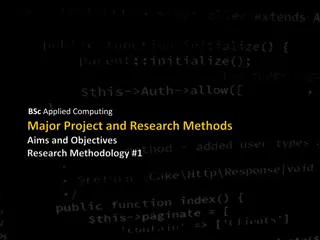Next-Gen Context-Aware Computing Solutions: Challenges and Innovations
High data rate sensors and compute-intensive tasks put immense pressure on mobile devices, leading to the need for innovative solutions like cloudlets and stateful cloning of VMs. Swift actions such as fetching state on-demand, utilizing multicasting for parallelism, and optimizing resource usage are crucial in this evolving technological landscape.
Download Presentation

Please find below an Image/Link to download the presentation.
The content on the website is provided AS IS for your information and personal use only. It may not be sold, licensed, or shared on other websites without obtaining consent from the author. Download presentation by click this link. If you encounter any issues during the download, it is possible that the publisher has removed the file from their server.
E N D
Presentation Transcript
Eyal de Lara Department of Computer Science University of Toronto
Next gen context aware solutions High data rate sensors (Cameras and microphones) Compute intensive (real time classification & online learning) Interactive Puts huge pressure on mobile devices in terms of compute capacity, communication, and power budget
Cloudlet: data center in a box One network hop from the client Leverage fast VM fork Migrate computation to nearby cloud Scale application on cloud 802.11n AP with a n-core CPU Low latency, high bandwidth 3
Stateful swift cloning of VMs Virtual Network VM 0 VM 1 VM 2 VM 3 VM 4 Host 0 Host 1 Host 2 Host 3 Host 4 State inherited up to the point of cloning Local modifications are not shared Clones make up an impromptu/transient cluster
tix = sf_request_ticket(howmany) prepare_computation(tix.granted) me = sf_clone(tix) do_work(me) if (me != 0) send_results_to_master() sf_sync() else receive_results() sf_join(tix) Just like UNIX fork() Block scp more in the future Child VMs are gone
VMs are BIG: Dont send all the state! Clones need little state of the parent Clones exhibit common locality patterns Clones generate lots of private state
Send only what you really need Multicast Network hardware parallelism Prefetch: exploit locality patterns Heuristics Don t send if I ll overwrite Malloc: exploit apps generating new state
1. Start only with the basics 2. Fetch state on-demand 3. Multicast: exploit net hw parallelism 4. Multicast: exploit locality to prefetch 5. Heuristics: don t fetch if I ll overwrite Clone 1 Private State State: Disk, OS, ? Virtual Machine Processes Multicast VM Descriptor VM Descriptor VM Descriptor Metadata Special Pages Page tables GDT, vcpu ~1MB for 1GB VM Clone 2 Private State ? 8
143min 140 Ideal SnowFlock 120 87min 100 110min Seconds 61min 80 60 7min 40 20min 20 0 Aqsis BLAST ClustalW distcc QuantLib SHRiMP 128 processors (32 VMs x 4 cores) 1-4 second overhead
Hierarchical VM fork support VM fork over wireless 10
VM fork: natural intuitive semantics The cloud bottleneck is the IO Clones need little parent state Generate their own state Exhibit common locality patterns Sub-second cloning time Negligible runtime overhead Scalable: experiments with 128 processors
http://sysweb.cs.toronto.edu/snowflock http://sourceforge.net/projects/snowflock delara@cs.toronto.edu Questions? 12
